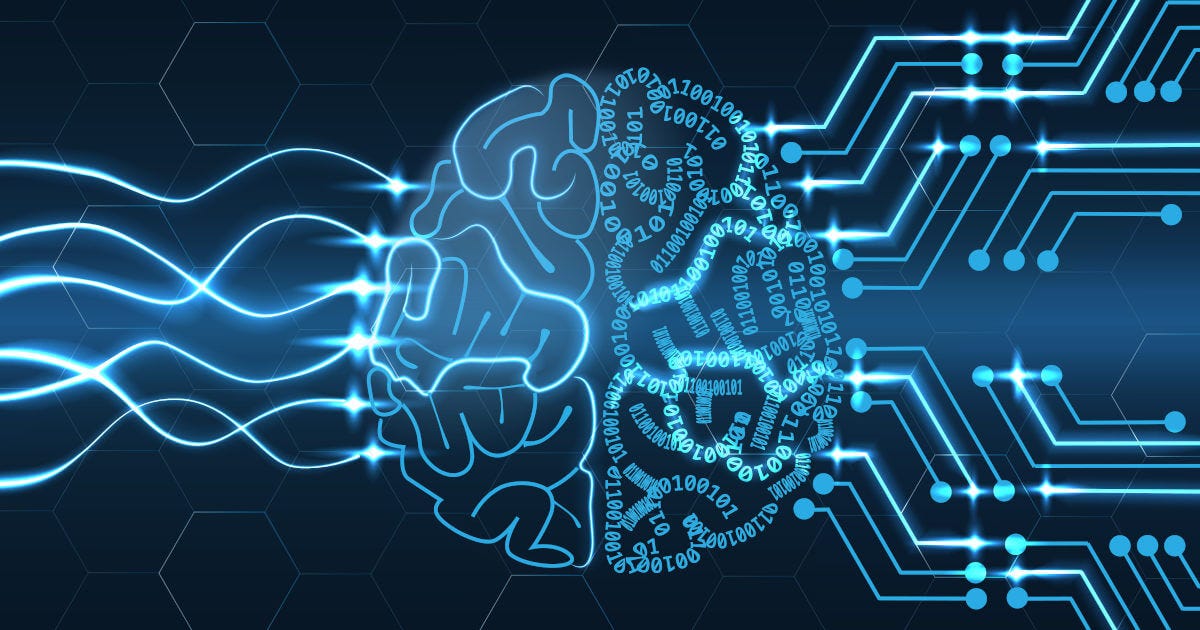Supervised vs. Unsupervised Learning: Key Differences

When you build a machine learning model, one of your first decisions is how you’ll train it. Will you give it clear examples with correct answers? Or will you let it find patterns in the data on its own? The choice you are making here is whether to use a supervised or unsupervised learning method. In simple terms, supervised learning uses labeled data, which is data that already includes the correct outcome. Unsupervised learning works with unlabeled data, requiring the model to identify patterns and relationships on its own.
In this article, you’ll get a clear, real-world explanation of these two methods without any jargon. You’ll learn about the circumstances in which each works best, how to choose between them, and what to expect. Whether you’re tackling spam detection, anomaly detection, or simply trying to understand how machines learn, this guide will help you get to the point quickly.
1. Why It Matters
If you’re using a machine learning model or thinking about building one, you need to know how it learns. At its core, this just means how it finds useful patterns in data so the model can make accurate decisions or predictions later.
Two Types of Learning
There are two main ways to do this: supervised and unsupervised learning. Think of it like this: You can either give your model a clear set of examples with the correct answers, or you can ask it to look at the data and figure things out on its own. Both are useful, but they serve different purposes.
Learning Styles Explained
Imagine training someone to sort your email. You could show them a hundred emails already marked as “spam” or “not spam” so they can start to recognize the difference right away. That’s supervised learning. But if you told them to look at your unlabeled emails and sort similar ones together, they’ll have to figure out the patterns without help. That’s unsupervised learning. In these examples, the differences in efficiency would be significant and the differences in accuracy would be noticeable. But each method has benefits.
2. Supervised Learning: Learning with Answers
Supervised learning is about learning from labeled data. Think of it like having the answer key when you are studying for an exam: You will know all the answers, but you might not know the order they’ll need to appear in the test. With supervised learning, you provide the algorithm with a set of inputs (the features) along with the correct output (the label). The model uses this information to learn how to match new inputs with the right outputs.
Example: Spam Detection
One of the most common examples is identifying spam emails. You feed the model thousands of emails that are already labeled “spam” or “not spam.” The model doesn’t memorize the messages, but can identify which words, patterns, or sender information often appear in spam emails. Later, when it sees a new email, it can accurately predict whether it’s spam, even though it hasn’t seen that exact message before. This makes it highly effective at discerning unwanted content without needed a human to sort through everything manually.
How It Works
The model builds a link between training data and the expected outcome. During this process, the supervised learning algorithm functions similarly to a decision tree or a regression model in that it learns to connect input patterns with specific results. To put it another way, it creates a map that leads from question to answer using the labeled data as guideposts.
Other Real-World Uses
- Product classification: Tagging items in an online store by type or brand, based on existing labeled entries.
- Loan approval: Using past applications labeled as “approved” or “denied” to assess new ones that share similar traits.
- Medical diagnosis: Predicting diseases based on labeled patient data, such as symptoms or test results.
- Proposal scoring and prioritization: Analyzing past business proposals labeled as “accepted” or “rejected” to identify patterns linked to the outcomes.
In each of these, the goal is to make a classification or prediction based on past examples where the correct answer is already known. This “learn by example” method helps machines make consistent and reliable decisions when accuracy really matters.
3. Unsupervised Learning: Finding Patterns Without Labels
In unsupervised learning, you don’t give the model any labeled data or any sort of “answer key” to guide it. It works with unlabeled data, meaning it doesn’t know the right answer and instead has to figure things out by identifying patterns.
Example: Anomaly Detection in Banking
Let’s use the example of someone who works in a bank and wants to flag unusual spending patterns on an account. They don’t necessarily know in advance what fraud looks like because it can take a lot of forms and those forms change all the time. So, they provide the model with a large set of data points showing the customer’s behavior over time, which enables the model to know what “normal” looks like on that account. Then, if something looks very different, for instance a sudden $3,000 charge in another country, it gets flagged as an anomaly. That’s anomaly detection, a common use for unsupervised learning. The system in this example reviewed the data, determined what was typical account activity, and flagged anything outside that boundary of “normal” so the humans could take a closer look at it.
How It Works
Instead of learning a direct input-output connection, the algorithm looks for patterns and relationships within the data. It might group similar data points together (called “clustering”) or reduce complex data into simpler parts to help reveal structure. Think of it as similar to what you have to do when you start working on a jigsaw puzzle: First you turn all the pieces right-side up, then perhaps start sorting them by color. It will take a while, but eventually you will fit all the pieces together correctly.
Other Real-World Uses
- Customer segmentation: Grouping customers by buying habits or behavior.
- Organizing images or documents by similarity.
- Recommending new content based on what groups of users tend to like together.
- Proposal clustering and insight extraction: Grouping similar proposals by tone, topic or objectives to discern trends in client needs or organizational priorities.
These systems can help uncover structure in the data even when the person looking for anomalies doesn’t know what they look like.
4. Key Differences at a Glance
The table below sums it up: Supervised learning provides detailed data that informs the model about what it’s looking for and helps it learn to predict. Unsupervised learning lets the model find connections on its own.
| Feature | Supervised Learning | Unsupervised Learning |
| Data | Labeled data | Unlabeled data |
| Goal | Predict a specific outcome | Discover hidden structure |
| Example | Spam detection | Unusual behavior detection |
| Algorithm learns | From correct answers | From patterns in data |
| Output | Categories or values | Groupings or outliers |
| Common tasks | Classification, regression | Clustering, anomaly detection |
5. Choosing the Right Approach
If you already have labeled data, meaning you know the correct answers, supervised learning is usually the way to go. You’ll use it when your goal is to accurately predict something specific, like whether a user will click an ad or how much a house will sell for.
But if you don’t know the labels or you want the model to find hidden structure in the data, unsupervised learning is a better fit. It’s ideal for exploration, discovering new groupings, or detecting outliers. Think of it like sorting your photos:
- If you already labeled each photo as “family,” “vacation,” or “work,” you can train a supervised model to recognize the difference.
- But if your photos aren’t labeled, and you want the model to organize them into groups based on who’s in them or where they were taken, that’s an unsupervised task.
Sometimes, a project starts with one method and shifts to another. For example, unsupervised learning might help you discover useful groups, and later you can label those groups and build a supervised model to classify new data.
6. Common Use Cases
Supervised Learning in Action
- Spam detection: You train the system on a dataset of emails labeled as “spam” or “not spam.” Once trained, the model flags new emails based on patterns it learned.
- Product suggestions: A retail app uses your past purchases and ratings (labeled data) to recommend similar items.
Unsupervised Learning in Action
- Movie recommendations: Streaming platforms group users by what they watch. Even if no one labels a movie as “quirky comedy,” the algorithm can find clusters of users who like similar things and suggest it accordingly.
- Unusual purchases: A sudden spike in spending or a purchase made in a specialty shop could be signs of fraud if they don’t fit the pattern of the user’s usual behavior.
Don’t think of these model training methodologies as tech experiments. They’re everyday tools that shape the content you see, the messages you receive, and the services you use.
7. Which One Should You Use?
Understanding the difference between supervised vs unsupervised learning helps you choose the right tool for the job. If you have clear examples and want to predict a specific outcome, go with supervised learning models. If you want to explore your data, uncover patterns, or identify unusual behavior, go with unsupervised learning.
Relying on Training Data
Both approaches rely on training data, but the type of data and what you do with it makes all the difference. Whether you’re building a classification problem for spam detection, setting up an anomaly detection system for banking or other types of account management, or trying to find the proposal template that will win you the most bids, the key is matching the problem to the method.
Machine Learning
In machine learning, there’s no one-size-fits-all solution. But once you understand how each approach works, you can use them to build smarter, faster, and more useful systems without getting lost in the details. Ultimately, machine learning is not just about algorithms, it’s about using them to get at the insights a human might not see or not see quickly. Whether your goal is prediction or discovery, understanding the machine learning landscape will help you move from raw data to meaningful answers. And in a world that is increasingly driven by data and reliant on speed, that ability is more than powerful, it’s essential.
Ready to work smarter, not harder?
Discover how AutogenAI can transform your proposal process book a demo today.


